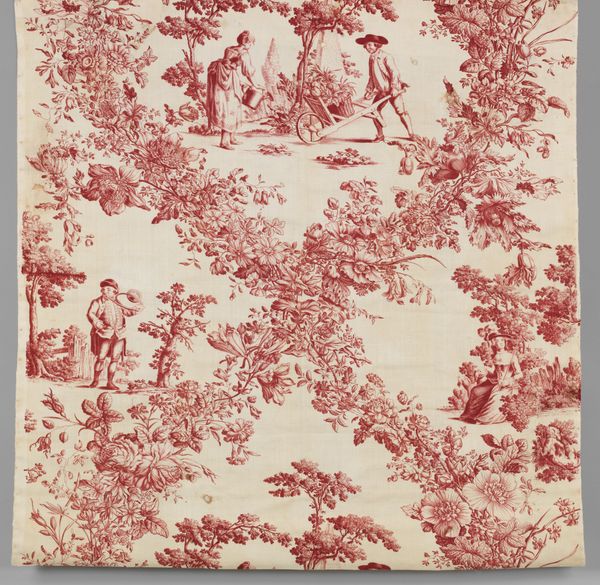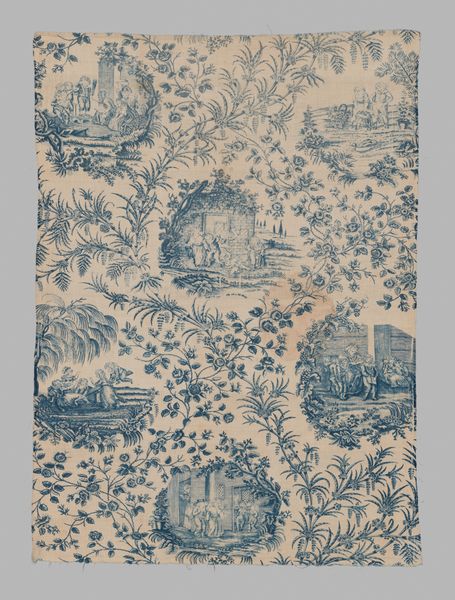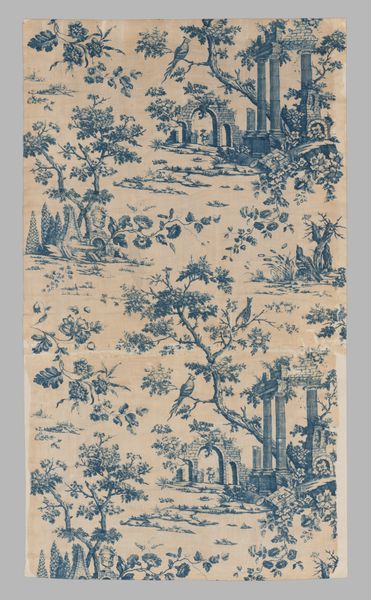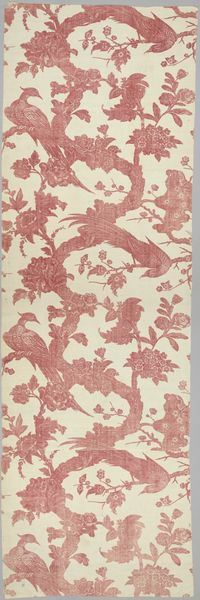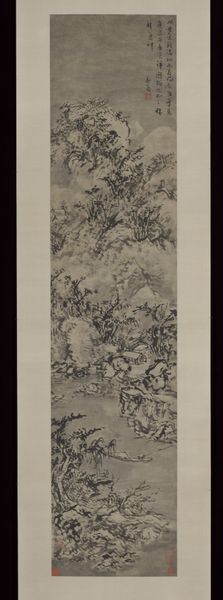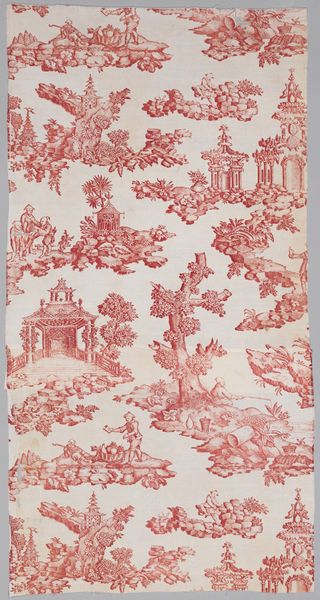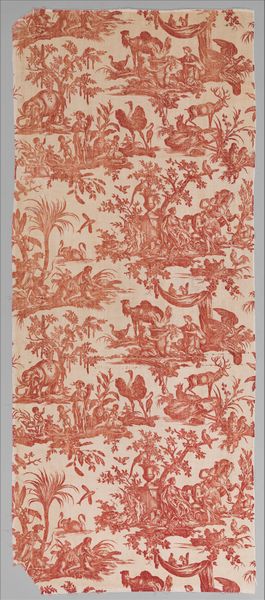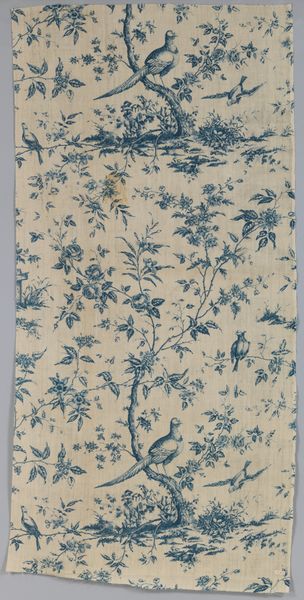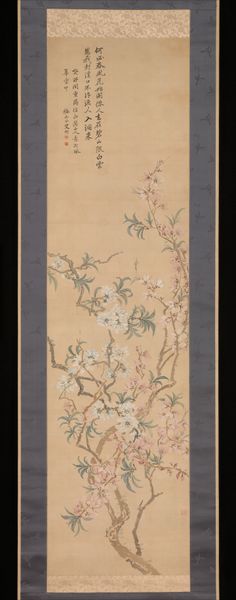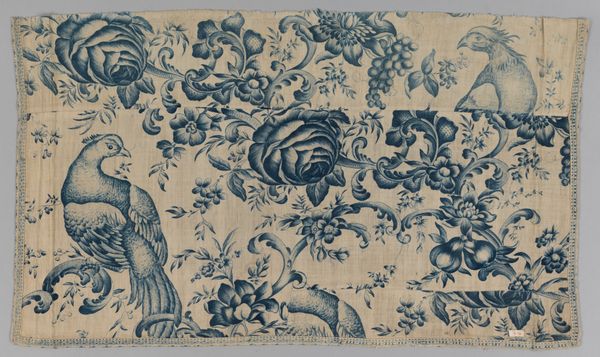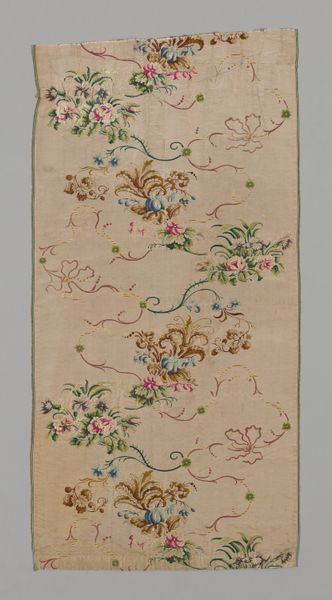
Dimensions: L.33 x W. 28 inches (83.8 x 71.1 cm)
Copyright: Public Domain
Curator: This textile work, known simply as "Piece," dates from 1760 to 1770. You can currently view it at the Metropolitan Museum of Art. It's a fascinating example of decorative art using weaving and print techniques to simulate a landscape. What strikes you most when you look at it? Editor: Immediately, I see this muted palette; it makes me think of faded tapestries in old estates. The weave and the repeated scenes – very process-oriented. And that pagoda! There’s an immediate exoticism suggested by the production values of the material. Curator: Precisely! The "orientalism" is key. We see a European fascination with an idealized "East," presented through the lens of baroque style. The figures are romanticized and presented within this very contrived landscape, upholding hierarchical values and ideas about race and gender. Editor: It makes you think about labor, right? About who produced the cloth, under what conditions, and the intended consumer of this sort of decorative piece. The textile implies not only access to distant places, but access to the raw materials needed to then construct those places in art. Curator: Exactly. It becomes a stand-in for larger geopolitical relationships, an exercise in projecting colonial desires through a domestic object. The patterns are decorative and pleasing, yet subtly promote an ideological position. Editor: The very act of weaving – threads interlocked, layered – mirrors the intertwined histories, the layering of meaning and cultural assumptions. And let’s not forget the dye – indigo perhaps? Where did it come from, what was its cost in labor and trade? Curator: Right, and we should also question what types of narratives and lives the textile covers over to make this idyllic image. Editor: This work truly exemplifies how deeply materiality is embedded in cultural and social contexts. Curator: And by thinking about social hierarchies of labor, class and identity during this period, the object transcends being mere ornament and instead exposes the unequal exchanges operating during its moment in history.
Comments
No comments
Be the first to comment and join the conversation on the ultimate creative platform.
